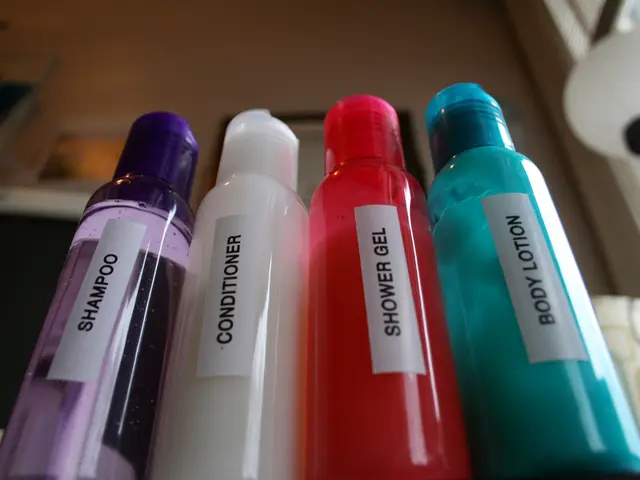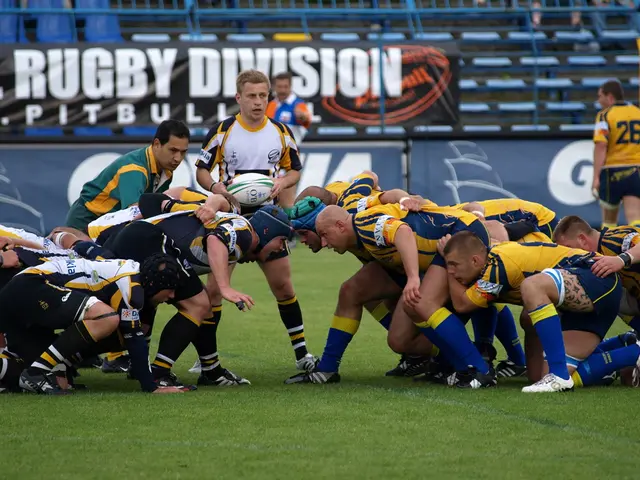Navigating Concussion Management Guidelines: Application across Youth Leagues and Professional Sports, from Ballparks to Football Fields
The world of sports can be brutal, leaving players bruised and battered. Whether it's the athlete, the UFC fighter, or little Johnny taking one on the noggin, chances are they've suffered a whack on the head. But, lurking behind every thrilling, adrenaline-pumping game is a looming threat: concussions.
Sure, rule changes and improved equipment like helmets and mouthguards have curtailed some of the pressure, yet there's no guarantee against accidents. That's because concussions, much like the team dynamics that make sports so exhilarating, can be unpredictable, complex, and hard to detect.
Enter the Concussion Protocol - a set of guidelines that aims to help everyone involved in sports, from parents and coaches to athletic trainers and healthcare professionals, identify and care for those who've suffered a head injury. Its ultimate goal? Shielding athletes at every level from the debilitating effects of concussions.
But what exactly is this Concussion Protocol? And how does it impact athletes across the board? To find out, we spoke with sports medicine physician and concussion specialist, Dr. Richard Figler. In this engaging interview, he shares his insights on the critical aspects of the protocol that might just save a player's season, or even their life.
What is the Concussion Protocol?
The Concussion Protocol, also known colloquially as the "concussion protocol," was developed and updated by the Concussion in Sports Group. This global collective of sports medicine researchers and physicians launched the consensus statement on concussion in sport, a comprehensive guide that covers everything from diagnosing concussions and initial management on the sidelines to returning to play. Phew!
The Essential Steps of the Concussion Protocol
While the details of the protocol may vary depending on the athlete and their circumstances, there are three primary aspects that every sports enthusiast should know:
1. Recognizing Concussions
Anyone hit on the head who isn't feeling like their usual self needs to be assessed for a concussion. Step one of the protocol involves checking the athlete for common signs and symptoms, such as headache, dizziness, balance problems, sensitivity to light or noise, confusion, and simply feeling off. Surprisingly, they should be asked if they know the current date and year. Even more surprisingly, they may be asked to remember a list of words or numbers and repeat them back. Rigid tests of balance, eye functions, awareness, and motor responses may also be performed.
It's crucial to note that a trained professional should always perform these tests to ensure an accurate and thorough evaluation. A knowledgeable eye can spot subtle signs that might not be apparent to those unfamiliar with concussions, potentially leading to earlier identification and treatment. As Dr. Figler explains, "If an athlete is hit in the head and allowed to return while they have yet to recover, their threshold for another injury is lowered, and a subsequent impact can cause a loss of autoregulatory control of the brain function and their internal pressure systems." Yikes!
2. Relative Rest
The old advice of avoiding sleep for concussion patients is somewhat exaggerated. The truth is, as Dr. Figler clarifies, it's crucial to watch for those who pass out, lose consciousness, or have difficulty staying awake. They should be encouraged to get some rest, but extensive bed rest isn't recommended. Studies show that allowing for some physical and social activity during the recovery process helps athletes heal more quickly. As Dr. Figler puts it, "Relative rest, not absolute rest, is key."
3. Gradual Return to Sport
The protocol advocates for a stepwise return to sporting activities, based on the severity of the concussion, the athlete's tolerance of activities, and whether they're a first-time or repeat offender. The process involves engaging in exercises, gradually increasing the intensity of activities, and working one's way up to practice, contact practice, and eventually, gameplay. All the while, healthcare providers closely monitor symptoms to ensure they aren't progressing too rapidly or triggering a return of symptoms.
The Nitty-Gritty of Concussions: Kids and Adults
Though the general structure of the protocol is similar for all ages, there are differences in how concussions are diagnosed and treated based on the maturity level of the athlete.
NFL Concussion Protocol
The National Football League (NFL) follows a modified version of the consensus statement, with largely the same process as other sports. However, elite athletes such as pro football players have easier access to 24/7 medical care, allowing them to return to play more swiftly.
Concussion Protocol for Kids
The Concussion Protocol for kids emphasizes a more conservative and prolonged return to play process due to their growing brains. Research shows that children's brains may be more susceptible to damage from concussions and take longer to heal. As a result, kids tend to require closer monitoring and more frequent assessments by healthcare providers. Their academic environment, including school work and screen time, may also need to be adjusted to ensure a smooth return to learning.
The Takeaway
Though participating in sports can have tremendous benefits for both physical and mental health, the risk of concussions cannot be entirely avoided. However, protocols such as the Concussion Protocol offer invaluable guidance to healthcare professionals, parents, coaches, and athletes alike on how to manage and mitigate the risks associated with concussions. "Athletic activity is good for us, both physically and mentally. We want to protect athletes, but you can't put them in a bubble," explains Dr. Figler. "Risk reduction makes a difference."
So, the next time you find yourself cheering on your favorite team and a player takes a blow, remember that there's a concerted effort underway to ensure they get the care they need to make a safe, speedy recovery. Here's to a healthier and safer future for all athletes!
- The Concussion Protocol, also known commonly as the "concussion protocol," is a set of guidelines developed by the Concussion in Sports Group, aiming to help everyone involved in sports identify and care for athletes suffering from head injuries.
- The primary aspects of the Concussion Protocol include recognizing concussions, encouraging relative rest, and following a gradual return to sports based on the severity of the injury.
- In diagnosing concussions, athletes should be assessed for common signs and symptoms such as headache, dizziness, balance problems, sensitivity to light or noise, confusion, and difficulty remembering certain information.
- While the Concussion Protocol has similar structures for all ages, differences in diagnosis and treatment are based on the maturity level of the athlete, with kids requiring more conservative and prolonged return-to-play processes due to their growing brains.








